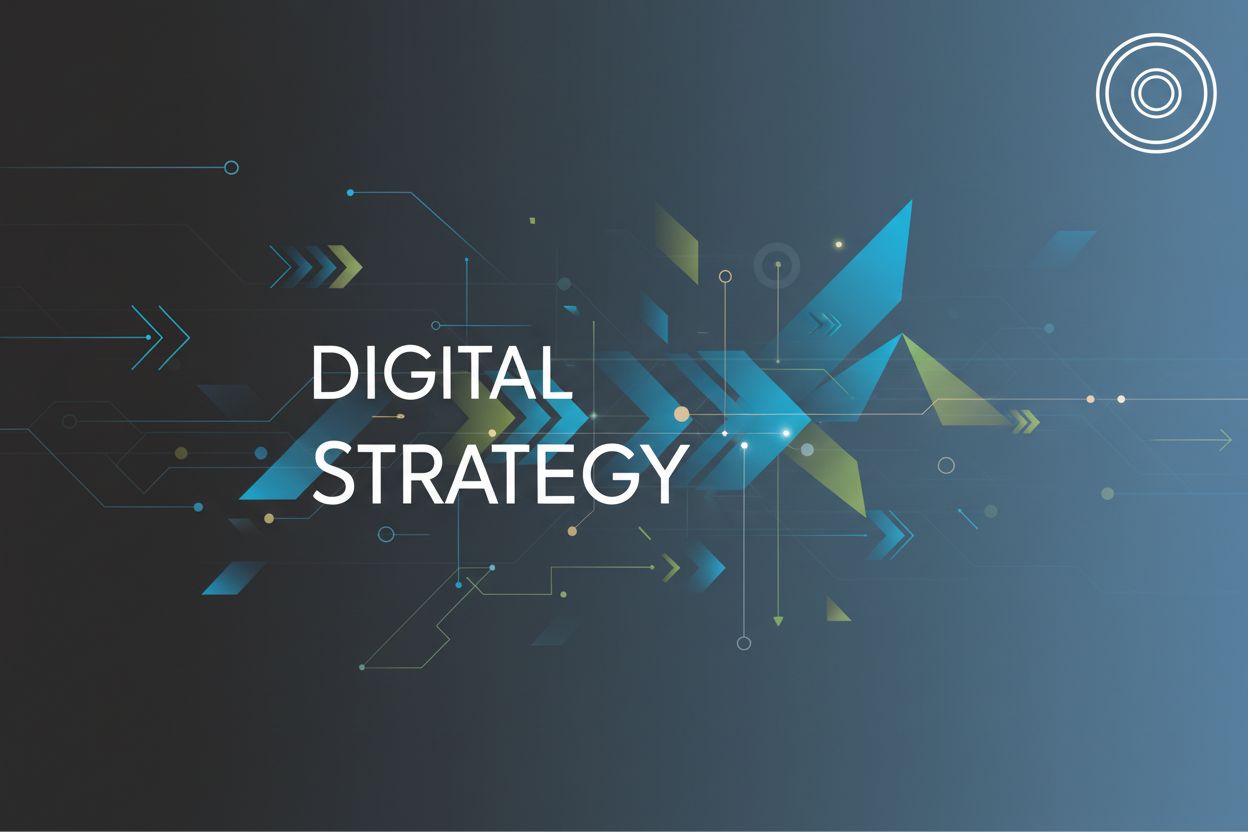Maximizing Impact: Types and Examples of Interactive Ads
TL;DR
Introduction: The Rise of Interactive Advertising
Okay, so picture this: you're scrolling through your phone, half-zombie, and BAM! An ad actually makes you stop. That's the power of interactive advertising, and it's kinda taken over, hasn't it?
Interactive ads ain't your grandpa's static billboards, that's for sure. It's about getting you to do something.
- Grabbing Attention: Let's face it, attention spans are, like, gone (Why our attention spans are shrinking, with Gloria Mark, PhD). Interactive ads combat this by demanding participation. Think quizzes, polls, or even mini-games right in the ad itself. This participation forces users to actively engage, making them less likely to scroll past.
- Boosting Engagement: People are more likely to remember an ad they interacted with. A well-placed, interactive ad can turn a casual browser into a potential customer by offering a personalized experience. When users make choices, they're investing time and mental energy, which leads to deeper recall compared to passively viewing a traditional ad.
- Collecting Data (the right way): When users actively engage, they're basically handing over valuable insights. (Social media engagement: Everything you need to know - Emplifi) This data can then be used to refine targeting and messaging for future campaigns. Just be cool about it, okay? User choices reveal preferences and interests, allowing for more precise ad delivery and tailored content.
It's not just about flashy graphics; it's about creating an experience. And as we move forward, it's gonna be even more important, trust me. I mean, who even clicks on banner ads anymore?
Defining Interactive Ads: What Makes Them Different?
Interactive ads? They're not just ads, they're experiences. It's like, you're not just seeing something, you're doing something. So, what makes 'em pop?
- It's a two-way street: Unlike those old-school ads, you get to actually, like, participate. This means the user isn't just a passive recipient of information; they can influence the ad's content or outcome through their actions, like clicking buttons, answering questions, or playing a quick game. This active involvement is a key differentiator from static ads or even simple video ads.
- Feels personal: They can be tailored to you. Through the choices a user makes within the ad, it can adapt and present content that's more relevant to their specific interests or needs, creating a more personalized feel than a one-size-fits-all traditional ad.
- Data goldmine (responsibly!): Companies learns what you like, and hopefully, use it for good. When users interact, they reveal preferences and behaviors. For instance, if a user repeatedly clicks on ads for hiking gear, the system learns they're interested in outdoor activities. This data, when collected and used ethically, helps brands understand their audience better, leading to more relevant future advertising and product development, while respecting user privacy.
Next up, let's dive into the different kinds of interactive ads you'll see.
Types of Interactive Ads: A Comprehensive Guide
Alright, let's dive into interactive video ads – these are seriously cool. Remember those "choose your own adventure" books? It's kinda like that, but in ad form.
Branching narratives are where it's at. Forget linear storytelling; interactive video ads let viewers make choices that affect the plot. Like, imagine a car ad where you decide which features to test drive first. This allows for a more engaging and personalized viewing experience, unlike traditional linear videos where everyone sees the same thing.
Super Engaging. People love having control, you know? By letting them steer the story, you keep them hooked way longer then you usually would of. Plus, those choices gives you data, what they are intrested in, which can be super useful. The data collected from user choices – like which product feature they explore or which storyline they follow – provides valuable insights into consumer preferences and intent. This information can then be used to refine ad targeting, personalize future communications, and even inform product development. It's crucial to handle this data responsibly, ensuring user privacy is protected.
Memorable Brand Experience. This is the big one. folks are more likely to remember you if they had a say in the story. It creates a connection that those boring old banner ads just can't touch, you know?
The thing is, you gotta make sure the story is actually good. If the choices don't matter or the outcomes are lame, people will bounce fast.
Beyond video, we also have Augmented Reality (AR) Ads. These let you overlay digital content onto the real world through your device's camera. Think virtually trying on clothes or seeing how a piece of furniture would look in your room. It's a super immersive way to experience a product before you buy.
Next up, let's look at some real-world examples of interactive ads that really worked.
Real-World Examples of Successful Interactive Ad Campaigns
Interactive ads are cool and all, but do they even work? Well, lemme tell ya about some that knocked it outta the park.
Domino's 'Tweet-a-Pizza': So, Domino's let people order pizza just by tweeting a pizza emoji. Yeah, really. It was kinda genius 'cause it got everyone talking and ordering. It boosted their brand awareness like crazy. This simplified the ordering process to an extreme, making it incredibly shareable and memorable.
L'Oréal's AR Makeup Try-On: L'Oréal let you virtually try on makeup using augmented reality. I mean, who wants to buy lipstick without seeing if it looks good first? I know I don't! Apparently, it gave their online sales a serious boost. This AR feature directly addressed a common customer pain point, reducing purchase hesitation and driving sales.
Old Spice's 'Choose Your Own Adventure': Remember those Old Spice ads where the guy was always changing scenes? They made one where you got to pick what he did next! It was a total viral hit, and everyone was sharing it. This campaign leveraged user agency to create a highly engaging and shareable experience, extending its reach far beyond traditional ad views.
These are just a few of the ways that interactive ads can be used to grab attention and boost engagement. Now, let's talk about what to keep in mind when you're creating your own interactive ads.
Integrating Interactive Ads into Your Digital Strategy
Okay, so you're thinking about slapping interactive ads everywhere, huh? Hold up a sec, cause it's not that simple. It's gotta fit.
- Goals, baby! What's the point? More sales? Brand awareness? Figure that out first. Your interactive ad should directly support your overarching marketing objectives. A campaign focused on brand awareness might use a fun, shareable game, while a sales-driven campaign might use a product customizer.
- Who are we talkin' to?, like, really. You wouldn't sell dentures to teens, right? Understanding your target audience is crucial. The tone, complexity, and type of interaction should resonate with their expectations and preferences. A playful AR filter might work for a younger demographic, while a detailed interactive infographic might appeal to a more professional audience.
- Don't be a square, make it fit. If your ads are for, say, a financial app, a goofy mini-game might not be the best move. The interactive element should align with your brand's identity, messaging, and the overall user experience you want to provide. For a financial app, an interactive tool that helps users budget or visualize savings goals would be more appropriate and reinforce trust, rather than a distracting, unrelated game. Brand consistency is key to building a cohesive and credible presence.
Think about it, next up, platform choice.
The Future of Interactive Advertising
Okay, so what's next for interactive ads? It's not just about slapping a quiz on a banner, that's for sure.
- ai is gonna go wild: Imagine ads that change themselves based on your mood, or what you're currently looking at online. Creepy? Maybe a little. Effective? Probably. ai will enable ads to dynamically adapt content, visuals, and even calls to action in real-time based on user data and context.
- Voice is the new screen: Think talking ads, where you can actually chat with the brand. It's like having a tiny salesperson in your pocket, but, hopefully, less annoying. This could involve users asking smart speakers or voice assistants questions about products, or even initiating purchases through voice commands. For example, you might say, "Hey [smart assistant], what's the best way to clean this stain?" and an ad could respond with a product recommendation and instructions.
- Welcome to the metaverse, ad edition: Immersive experiences will let you virtually "try" products before you buy. A furniture store that lets you see how a couch looks in your living room before you buy it? Yeah, that's coming. This extends AR concepts into fully immersive virtual environments, allowing for highly realistic product exploration and interaction.
It's gonna be wild, honestly.
Conclusion: Maximizing Impact with Interactive Ads
So, will interactive ads save the world? Nah, probably not. But it will make your marketing way more interesting.
- Don't just be an ad, be an experience. Think interactive quizzes that give real value, like personalized insights or educational content, or augmented reality that solves a problem, like visualizing a product in your space. The key is to offer something genuinely useful or entertaining to the user.
- Test, test, then test again. What works for one brand might flop for another. The Course Hero site, for instance, highlights how Google Ads lets you target and tweak campaigns. Experiment with different formats and calls to action to see what resonates best with your audience.
- Keep it ethical, alright? No one likes feeling manipulated. Always be transparent about data collection and ensure your interactive elements are designed to enhance, not exploit, the user experience.
Interactive ads are a step up. So, go on, give 'em a shot.




